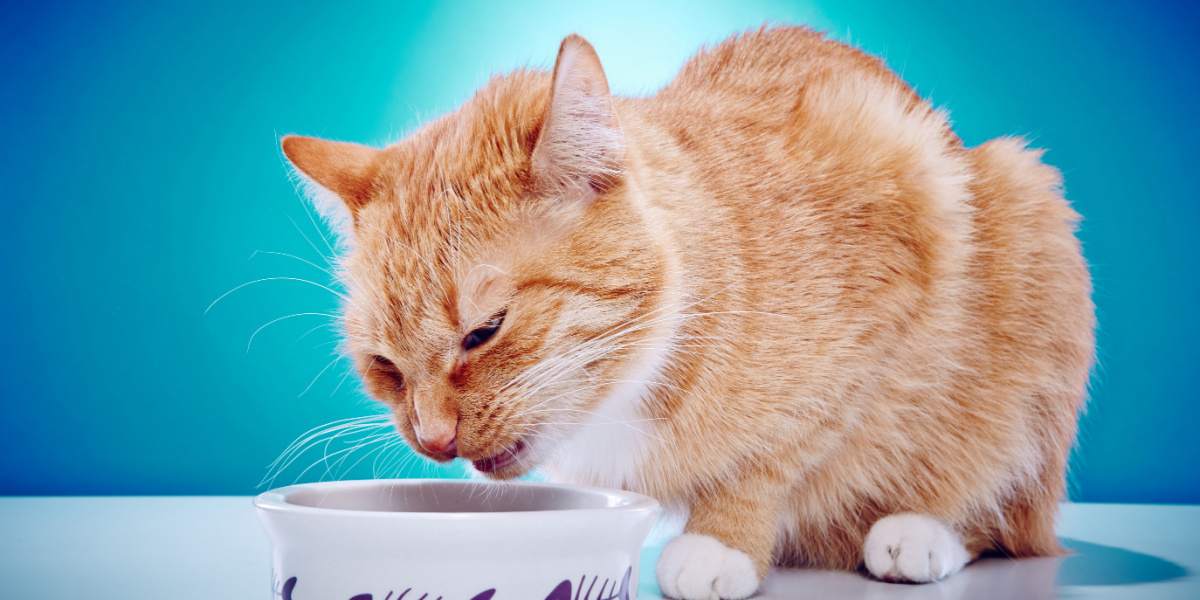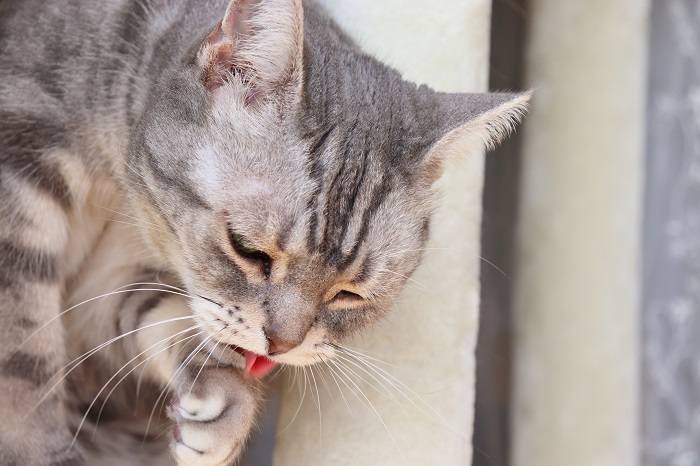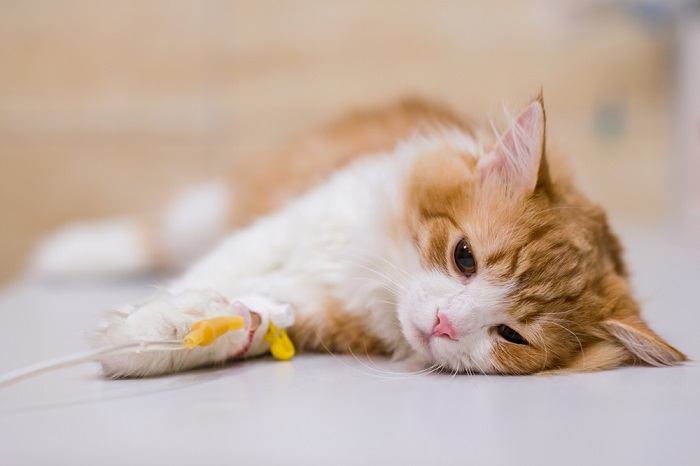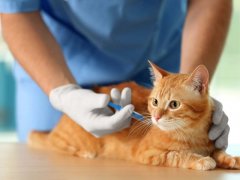As the owner of a cat with a very sensitive stomach, I have had my share of cleaning up cat vomit. It’s one of the less glamorous aspects of being a cat owner. Nevertheless, it’s a fact that most cats will still get sick at some point. Pretty much all cats will deal with coughing up hairballs too, due to their grooming habits. It’s a cat thing.
Cleaning up after your cat can be a daunting task, but it doesn’t have to be. While cat vomit is certainly not the most pleasant thing to interact with, clean-up can be quick and easy if you follow a few easy steps.
5 Steps for Cleaning up Cat Vomit
Cat vomit can stain carpets and other materials while leaving behind a bad smell. It is of course best to act as quickly as possible when you see the mess, or when you hear your cat getting sick. But let’s be realistic – sometimes you wake up in the morning to find the mess left by your cat overnight, either by seeing it or stepping in it. The cat owners that I know seem to all relate to this unpleasant scenario.
Even if the vomit has been sitting for some time and it does leave behind a stain, fear not – even the toughest cat vomit stains can usually be removed. In general, you will want to follow these five steps:
- Pick up the chunkier bits of the vomit with a dry paper towel or a scoop. Once this is removed and thrown out, it’s much easier to deal with it.
- Use a spray bottle to spray water on what is left of the mess and blot it dry with a towel.
- Apply a pet odor and stain eliminator on the stain. More on this in a moment.
- Using a soft brush or cloth towel, “agitate” the stain by scrubbing it.
- Blot the area with a dry towel. Then let the area air dry.
If the mess is really, really bad, hiring a professional carpet cleaner is always an option. Most vomit messes from your cat won’t come down to this. In some cases, you may need to repeat the steps of the cleaning process to make sure that the mess is completely cleaned up.
If cleaning up cat vomit is a consistent problem, consult your veterinarian. Frequent vomiting from your cat may be a sign of a serious underlying health problem.
DIY vs. Store Bought Pet Stain Eliminators
A quick Google search on the topic of cleaning up cat vomit will provide you with plenty of DIY recipes for pet stain eliminators that you can make with common household items. Common ingredients in these recipes include vinegar, hydrogen peroxide, salt, baking soda, dish and/or laundry detergent, and even vodka.
While a DIY recipe containing some or all of these ingredients can work in a pinch, it’s best to always have a store-bought pet stain and odor eliminator handy. Many of the DIY ingredients have their own unpleasant smells, such as vinegar. Other ingredients will leave behind build-up and residue if not they are not cleaned properly or thoroughly, like dish detergent.
Hydrogen peroxide could bleach or discolor some carpets and materials. It’s also worth noting that even the best DIY cleaners will not completely remove a stain or smell if the vomit has been sitting for some time.
Store-bought pet stain and odor eliminators are made specifically for cleaning up pet stains. Choose a cleaner that uses an enzymatic formula. Enzyme solutions are made with a bacteria that produce enzymes that break down your cat’s vomit into molecules that the bacteria then eat.
This way, the odor is removed at a molecular level, instead of just getting masked. These cleaners are also not harmful to cats or other animals, so you won’t have to question if one of your DIY cleaners has something in it that may be unsafe to use with pets in the home.
These enzyme-based pet cleaners also come in handy when cleaning up other messes from your cat, such as “bathroom” accidents. Great products to have at your disposal include Cat Enzymatic Stain Remover & Odor Eliminator and Arm & Hammer Pet Fresh Carpet Odor Eliminator.
What To Do if Your Cat Vomits Frequently
Cats will cough up hairballs from time to time, due to their self-cleaning habits.
While cat vomit and hairballs are usually just harmless nuisances that just come with caring for a cat, they can also be a sign of something more serious. Cats have a reputation for being prone to vomiting, but this doesn’t mean this reputation is totally warranted.
While the occasional hairball is a normal “side effect” of a cat’s natural grooming routine, cat vomit that is occurring frequently that has nothing to do with hairballs should be monitored closely.
Cats may vomit for a variety of reasons, such as:
- Eating too quickly (also known as “scarf and barf.” This is the case with my cat)
- Food allergies
- Eating things that cats shouldn’t eat
- Sickness
- Gastrointestinal (GI) parasites, such as worms
- Serious diseases
Let’s briefly take a look at each of these scenarios. After all, preventing cat vomit in the first place is the best way to deal with potential pet-related messes.
Cat Vomit From Eating Too Quickly
If your cat is eating too quickly, this can lead to regurgitation. This means the food was ingested fast and has not had the time to break down during your cat’s digestion. This is when the vomit is not a liquid, but more of a chunky consistency that is covered in mucus. If this is an issue for your cat, you can feed them smaller portions spread out over more meals.
If this does not work, consider purchasing special bowls, such as slow feeders and puzzle feeders. These items not only force your cat to slow down while eating, but it also provides your cat with healthy stimulation by giving them a sort of game to play at mealtime.
Food Allergies and Eating Things a Cat Shouldn’t Eat
If you suspect that your cat may be allergic to something in their food, consult your veterinarian to help you determine if this is the case. It is not uncommon for individual cats to have particular food allergies and sensitivities.
Your cat may let curiosity get the best of them and end up eating something not fit for consumption. This could be as benign as eating a piece of a toy. Once the foreign object has been regurgitated, it should no longer be a problem. However, if your cat ingested something that may be poisonous or toxic, see your veterinarian immediately.
Cat Vomit From Sickness and Parasites
Just like people, cats can get sick from time to time. Minor illnesses that are treated quickly usually pass with time and/or proper medications, and the telltale symptom of vomiting will also pass along with the sickness.
Gastrointestinal parasites such as worms are also common in cats. Vomiting accompanied by weight loss is often a sign that a parasite is to blame. In many of these cases, a veterinarian will prescribe medication to rid your cat of parasites.
Conclusion
While vomiting in cats is usually nothing serious, this isn’t always the case. A cat that vomits frequently should be seen by a veterinarian to rule out serious conditions such as pancreatitis, kidney or liver failure, and inflammatory bowel disease, among other conditions.
While less common, it is always better to monitor your cat’s behavior closely to make sure that they are healthy and happy, and receiving the best treatment possible when there is an issue.
In addition to ruling out serious issues with your cat’s health and using an appropriate pet stain and odor remover, make sure that you follow the five easy steps listed above when your cat does get sick. It will make your life as a cat owner much easier!
Read More: 10 Subtle Signs Your Cat May Be Sick










